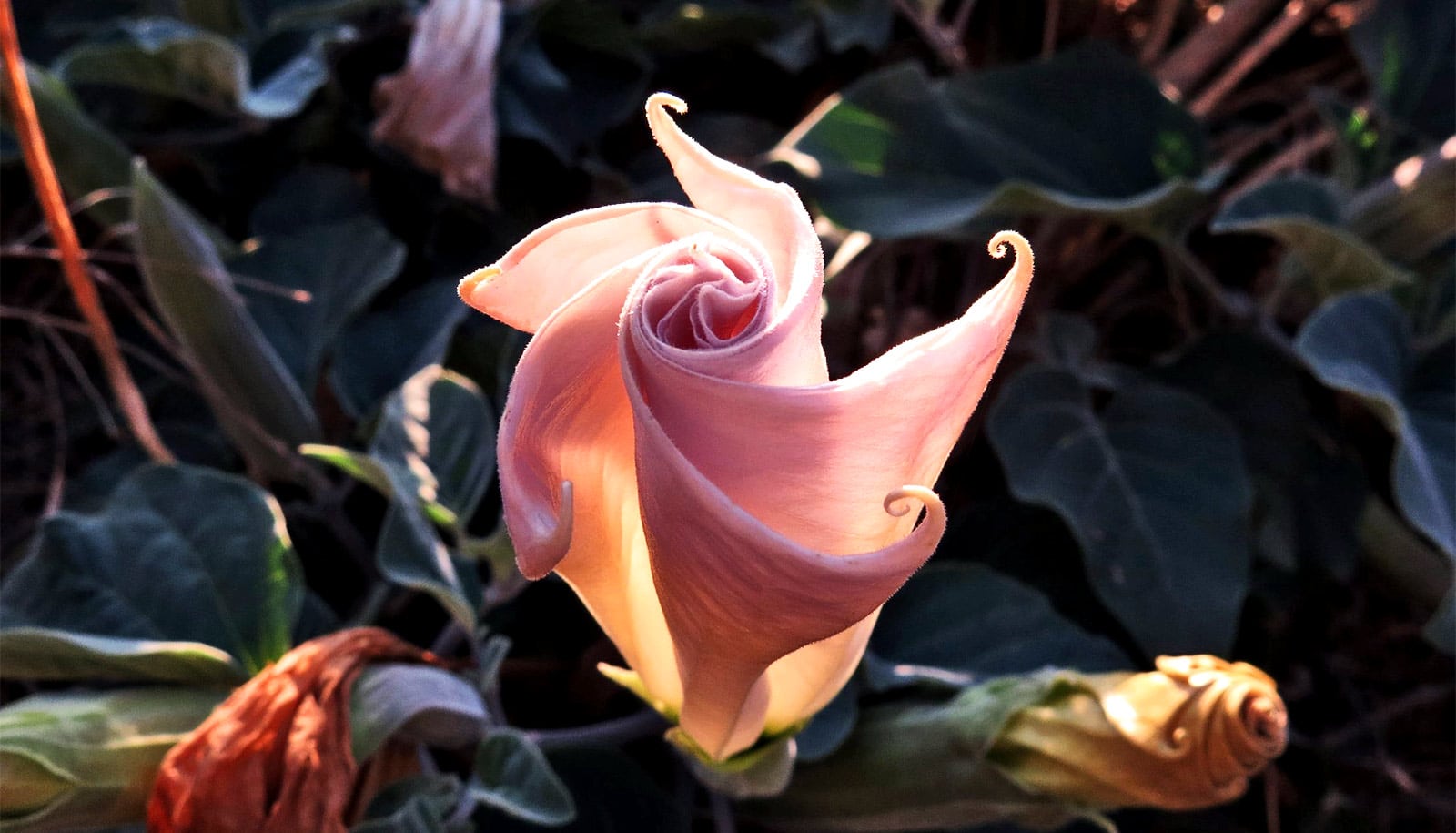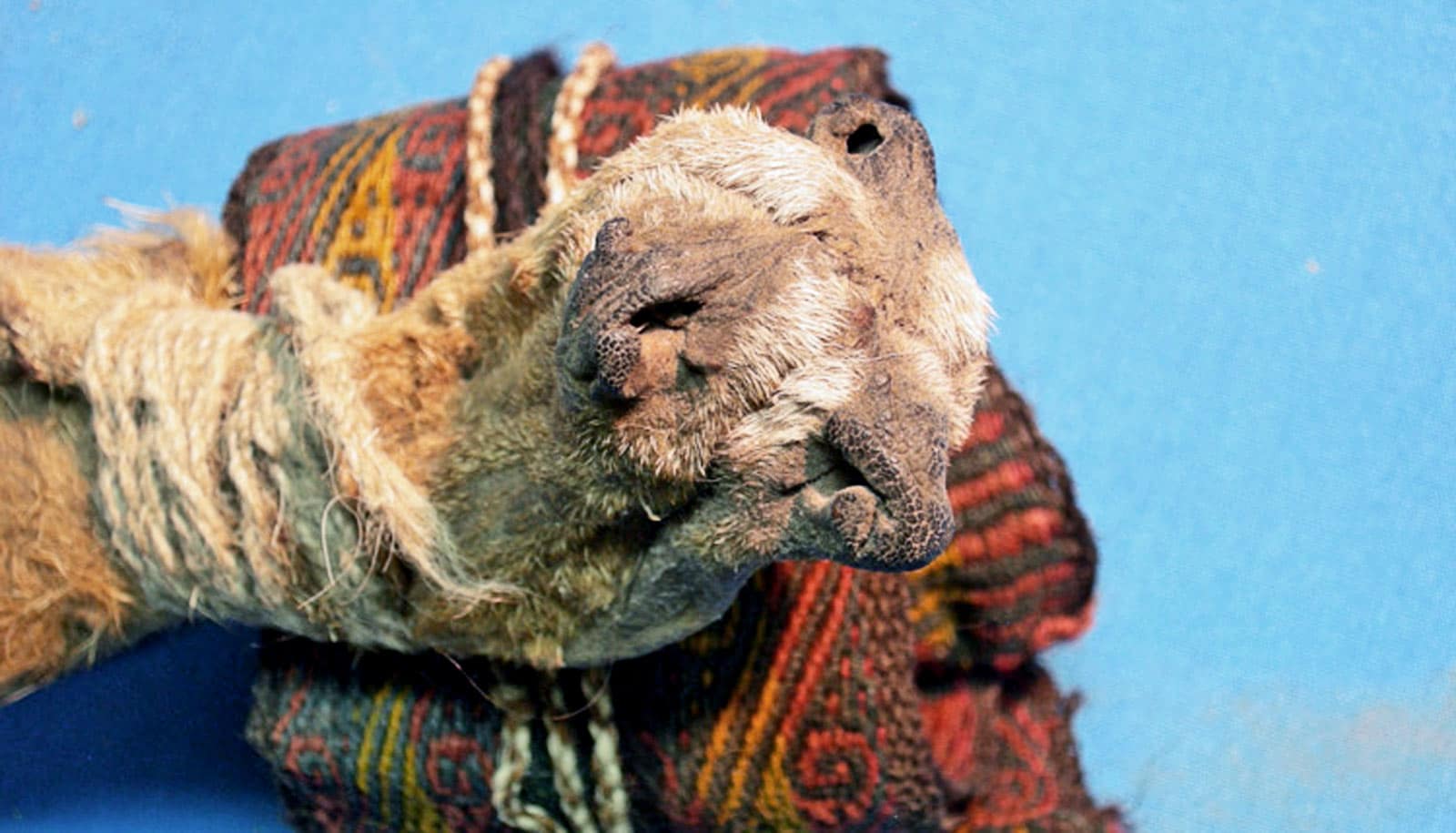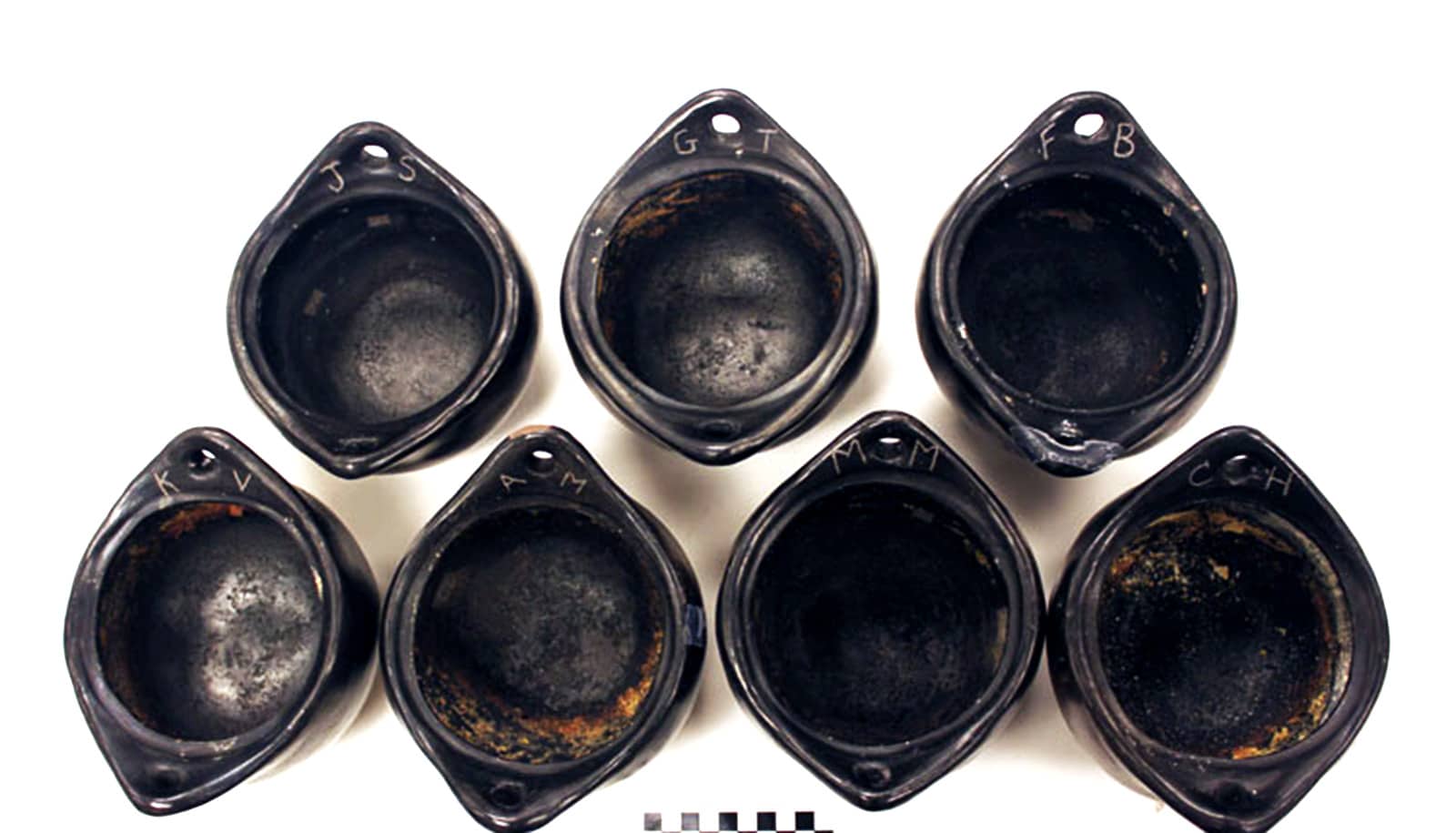A new study provides the first unambiguous evidence of the use of psychedelics at a Native American rock art site.
Archaeologists have long debated whether mind-altering substances influenced the making of ancient art in caves and rock shelters. The research offers new insight into the roles such substances may have played in some Native American communities.
At Southern California’s Pinwheel Cave, a rock art site associated with the Chumash people, the researchers discovered wads of chewed plant fibers, or quids, stuffed into crevices in the cave ceiling.

Chemical and microscopic analysis of the 400-year-old quids revealed the presence of hallucinogenic alkaloids and confirmed most specimens to be Datura wrightii, or sacred datura, a flowering plant native to California and historically used among the Chumash for ceremonial purposes.
The study in the Proceedings of the National Academy of Sciences also confirms that the fibers were crushed in a pattern consistent with chewing.
Sacred datura, a highly poisonous and sometimes lethal perennial with trumpet-shaped flowers, is known to the Chumash as momoy, after a powerful grandmother figure prominent in the tribe’s creation stories.
Pinwheel Cave, about 50 miles northeast of Santa Barbara, is named after a large, red pinwheel motif painted on a sloping section of the cave ceiling. At the summer solstice, sunlight travels across the pinwheel, suggesting a possible relationship between the art and seasonal rituals.
The art may depict the datura flower itself, which unfurls at dusk in a pinwheel-like pattern, says coauthor Kristina Gill, an archaeologist at the University of Oregon’s Museum of Natural and Cultural History and an expert in the archaeobotany of coastal Southern California. Also depicted on the cave ceiling is an anthropomorphized insect, which the researchers suspect may be a hawkmoth.
“Datura attracts hawkmoths as one of its key pollinators, so it wouldn’t come as a surprise to see the two species represented together,” Gill says.
While the new findings confirm a relationship between rock art and altered states of consciousness, they also call into question long-held theories about the context for that relationship.
“One school of thought views California rock art as the work of shamans who were on sacred retreat from the rest of the tribe,” Gill says. “But excavations here reveal evidence of food processing, cooking fires, and other domestic activities, indicating that the cave was less a site for rarefied shamanic practice and more a community hub where datura ingestion occurred alongside everyday, communal activities.”
Museum associate director Scott Fitzpatrick, a professor of anthropology who was not involved in the research, says that the study helps fill a void in the archaeology of mind-altering substance use.
“There is so little research on this topic in North America,” he says.
Fitzpatrick is also editor of Ancient Psychoactive Substances (University of Florida Press, 2018).
Source: University of Oregon



